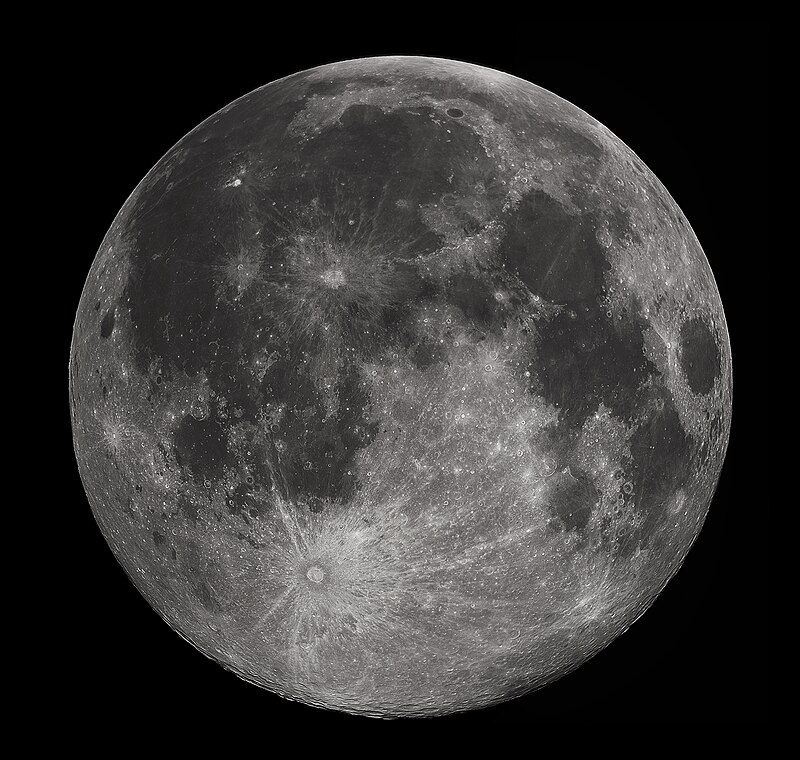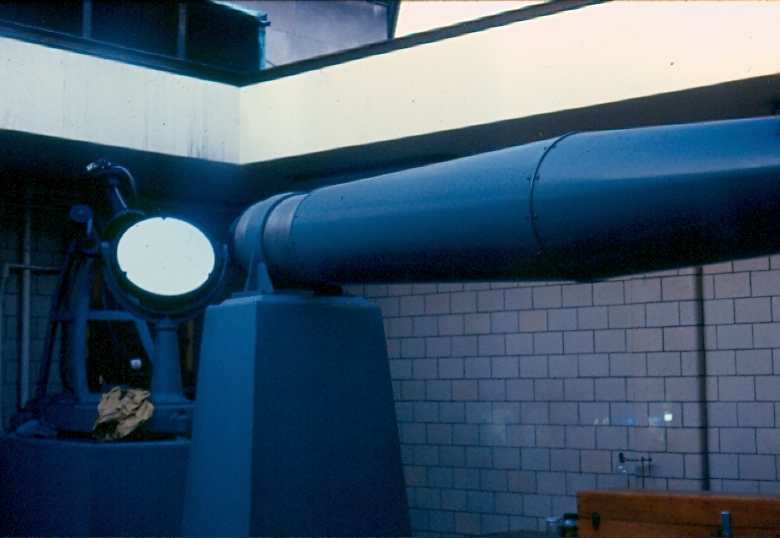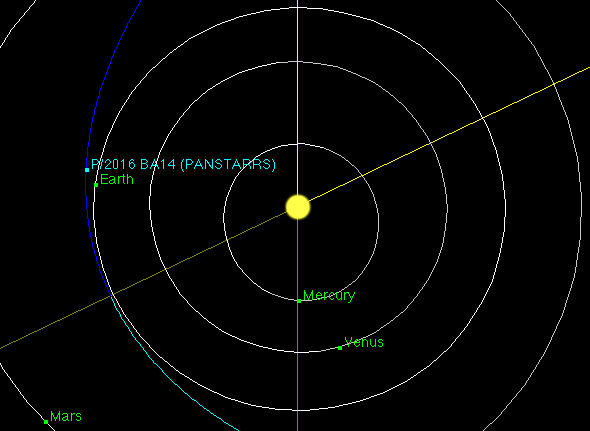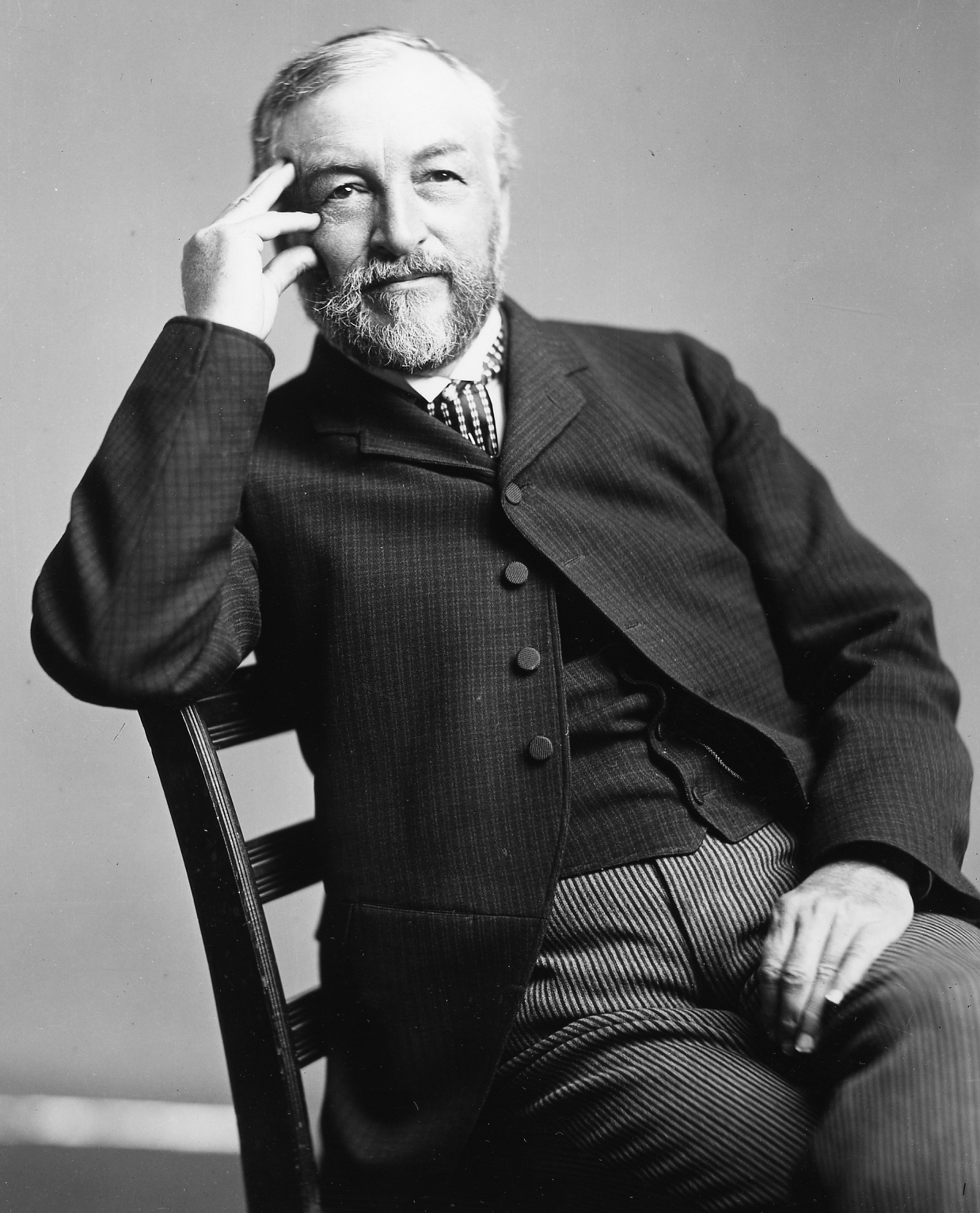
For centuries, the Full Moon phase of the Moon figured prominently in the annual calculation
of the date of Easter. However, this could possibly change within the next decade.
(Image Sources: Wikipedia.org , By Gregory H. Revera - Own work, CC BY-SA 3.0, https://commons.wikimedia.org/w/index.php?curid=11901243 )
By Glenn A. Walsh
Reporting for SpaceWatchtower
Since the beginning, Astronomy has been used
to calculate the date of Easter. In the 1930s and 1940s, a planetarium show explaining how Astronomy helped to calculate the date of Easter was shown to the public at several of the early planetaria, including Pittsburgh's original Buhl Planetarium and Institute of Popular Science.
However, in January a leading theologian announced that several Christian denominations may soon reach an agreement to fix the date of Easter, once and for-all.
However, in January a leading theologian announced that several Christian denominations may soon reach an agreement to fix the date of Easter, once and for-all.
The Most Reverend Justin Welby, the
Archbishop of Canterbury of the Church of England, said he has been
in on-going discussions with the Catholic, Coptic, and Orthodox
churches regarding the selection of a fixed date for Easter. In addition to Archbishop Welby, these discussions included Pope Francis, the Coptic Orthodox Pope Tawadros II, and the Ecumenical Patriarch Bartholomew I, head of the Greek Orthodox Church.
Last June, Pope Francis told a global gathering of priests in Rome, "we have to come to an agreement" regarding a common date for Easter. According to the Catholic News Agency, he joked that right now one Christian could tell another, "When did Christ rise from the dead? My Christ rose today, and yours next week."
Archbishop Welby said the agreed-upon date for Easter would probably be the second or third Sunday of April. However, changing the date of Easter may not occur for a decade or more. Secular governments would have to approve the change, and calendar and almanac publishers would have to be given advance notice of the date of implementation of such a change.
Last June, Pope Francis told a global gathering of priests in Rome, "we have to come to an agreement" regarding a common date for Easter. According to the Catholic News Agency, he joked that right now one Christian could tell another, "When did Christ rise from the dead? My Christ rose today, and yours next week."
Archbishop Welby said the agreed-upon date for Easter would probably be the second or third Sunday of April. However, changing the date of Easter may not occur for a decade or more. Secular governments would have to approve the change, and calendar and almanac publishers would have to be given advance notice of the date of implementation of such a change.
Actually, the effort to fix the date
for Easter is nothing new. According to Archbishop Welby, "Equally, I think the first attempt to do this was in the 10th century." Others note that this is one of the longest running controversies of Christianity, possibly dating back as far as the 2nd century.
Currently, Easter is one of the
moveable feasts, with the date determined by a lunisolar calendar,
similar to the Hebrew Calendar. The difficulty in calculating Easter is due to the fact that our civil calendar does not match astronomical cycles.
A combination of Hebrew, Roman, and Egyptian calendars, along with local culture and customs, all contributed to the Easter calculations we have today. The Egyptians based their calendar on the cycle of the Sun, which was adopted by Roman, and later, Christian cultures. The Hebrew Calendar is based partly on the lunar cycle (the Islamic Calendar is also based on the Moon). The Easter calculations become complicated when both lunar and solar calendars are used, combined with the fact that different Christian sects use different mathematical formulas.
A combination of Hebrew, Roman, and Egyptian calendars, along with local culture and customs, all contributed to the Easter calculations we have today. The Egyptians based their calendar on the cycle of the Sun, which was adopted by Roman, and later, Christian cultures. The Hebrew Calendar is based partly on the lunar cycle (the Islamic Calendar is also based on the Moon). The Easter calculations become complicated when both lunar and solar calendars are used, combined with the fact that different Christian sects use different mathematical formulas.
Jesus Christ's death and resurrection occurred during the Jewish holiday of Passover (which begins on the night of a Full Moon, immediately after the Vernal Equinox), according to the Christian Bible. However, this led to confusion of what date to celebrate Easter, with Christians celebrating the holiday on different dates.
In the year A.D. 325, the First Council of Nicaea
of the Roman Catholic Church established only two rules for the
annual determination of Easter: independence from the Jewish Calendar
and worldwide uniformity. The rules for actual calculation of the
date of Easter took centuries to work-out.
Calculating the date of Easter caused
several controversies, partly because some Christians did not want Easter to be associated with the Jewish Passover. In at least one case, violence accompanied
such a controversy. In attempting to calculate the date of Easter,
from astronomical observations, the 5th century astronomer
and mathematician, Hypatia of Alexandria, was murdered by a clique of
Bishop Cyril's zealots, according to the Church historian Socrates
Scholasticus.
In 725, an English monk, the Venerable Bede (later known as Saint Bede) made the general
rule for determining the date of Easter, by stating, “The Sunday
following the full Moon which falls on or after the equinox will give
the lawful Easter.” However, the Ecclesiastical rules are more
specific.
Easter was determined to occur on the
first Sunday, after the Ecclesiastical or Paschal Full Moon
(actually determined to be the 14th day of an Ecclesiastical
lunar month; this date could be a couple days away from the
actual Full Moon), which occurs on or soonest after the Vernal
Equinox (which is fixed as March 21, even if this Spring Equinox
occurs on March 19 or 20, which often happens).
Traditional Easter is celebrated by
most Western Christian sects today, March 27, the earliest the holiday has been celebrated in several years. Actually, Easter was also on March 27 in 2005 and on March 23 in 2008. One of the reasons for the early Easter, this year, is due to the use
of the Gregorian Calendar, a reform introduced by Pope Gregory XIII
in 1582. By the Gregorian Calendar, Easter always falls between March
22 and April 25, within about seven days of the actual, astronomical
Full Moon. The most common date for Easter, in the Gregorian Calendar, is April 19.
Orthodox or Eastern Catholic churches
do not celebrate Easter, this year, until May 1, one of the latest dates this feast day can occur. These churches
continue to use the Julian Calendar to calculate Easter and other feast days including Christmas (January 7). By the Julian Calendar, the March 21 date of the
Equinox is equated with April 3 (in our current century), when
converted to the Gregorian Calendar used as the civil calendar of all
nations where the Orthodox Christianity is predominant. Then,
Easter always falls between April 4 and May 8 of the Gregorian
Calendar. The Julian Calendar Full Moon is always several days after
the astronomical Full Moon, hence, the Orthodox Easter is often
later, relative to the visible Moon phases, than the Western Easter.
Due to the need to use Astronomy to
calculate the date of Easter and other moveable feasts, the Roman
Catholic Church has supported an astronomical observatory for several
centuries. The Vatican Observatory, originally established as the
Observatory of the Roman College of Rome in 1774, is now located in
Castel Gandolfo, Italy. The Holy See, since 1993, also operates the
Vatican Advanced Technology Telescope at the Mount Graham
International Observatory in southeastern Arizona.
If the date of Easter is ever fixed, Astronomy will no longer be part of this particular determination. But of course, even if Easter is designated as a certain Sunday in April, Astronomy will still be needed for the determination of the civil calendar for the actual date Easter falls on each year.
If the date of Easter is ever fixed, Astronomy will no longer be part of this particular determination. But of course, even if Easter is designated as a certain Sunday in April, Astronomy will still be needed for the determination of the civil calendar for the actual date Easter falls on each year.
Internet Links to Additional Information
More on Easter: Link >>> https://en.wikipedia.org/wiki/Easter
More on a Lunisolar Calendar: Link >>> https://en.wikipedia.org/wiki/Lunisolar_calendar
More on an Ecclesiastical Full Moon:
Link >>> https://en.wikipedia.org/wiki/Ecclesiastical_full_moon
More on the Gregorian Calendar: Link >>> https://en.wikipedia.org/wiki/Gregorian_calendar
More on the Julian Calendar: Link >>> https://en.wikipedia.org/wiki/Julian_calendar
More about Hypatia of Alexandria ---
Link 1 >>> https://en.wikipedia.org/wiki/Hypatia
Link 2 >>> http://booksandjournals.brillonline.com/content/journals/10.1163/15700720-12341264
More on the petition to designate March 20 (Vernal Equinox) to commemorate the life of Hypatia:
Link >>> https://www.change.org/p/canada-s-parliament-commemorating-the-first-female-astronomer-hypatia-of-alexandria
More about the Vatican Observatory: Link >>> https://en.wikipedia.org/wiki/Vatican_Observatory
Related Blog Posts ---
"Dim Penumbral Lunar Eclipse Early Wed. Morning" (During March Full Moon). 2016 March 22.
Link >>> http://spacewatchtower.blogspot.com/2016/03/dim-penumbral-lunar-eclipse-early-wed.html
"Fly-By of Twin (?) Comets Heralds Beginning of Spring." 2016 March 20.
Link >>> http://spacewatchtower.blogspot.com/2016/03/fly-by-of-twin-comets-heralds-beginning.html
Source: Glenn A. Walsh Reporting for SpaceWatchtower, a project of Friends of the Zeiss.
2016 March 27.

2016: 75th Year of Pittsburgh's Buhl Planetarium Observatory
Link >>> http://spacewatchtower.blogspot.com/2016/01/astronomical-calendar-2016-january.html
Like This Post? - Please Share!
Want to receive SpaceWatchtower blog posts in your inbox ?
Send request to < spacewatchtower@planetarium.cc >..
gaw
Glenn A. Walsh, Project Director,
Friends of the Zeiss < http://buhlplanetarium.tripod.com/fotz/ >
Electronic Mail - < gawalsh@planetarium.cc >
SpaceWatchtower Blog: < http://spacewatchtower.blogspot.com/ >
Also see: South Hills Backyard Astronomers Blog: < http://shbastronomers.blogspot.com/ >
Barnestormin: Writing, Essays, Pgh. News, & More: < http://www.barnestormin.blogspot.com/ >
About the SpaceWatchtower Editor / Author: < http://buhlplanetarium2.tripod.com/weblog/spacewatchtower/gaw/ >
SPACE & SCIENCE NEWS, ASTRONOMICAL CALENDAR:
< http://buhlplanetarium.tripod.
Twitter: < https://twitter.com/spacewatchtower >
Facebook: < http://www.facebook.com/pages/
Author of History Web Sites on the Internet --
* Buhl Planetarium, Pittsburgh:
< http://www.planetarium.
* Adler Planetarium, Chicago:
< http://adlerplanetarium.
* Astronomer, Educator, Optician John A. Brashear:
< http://johnbrashear.tripod.com >
* Andrew Carnegie & Carnegie Libraries:
< http://www.andrewcarnegie.
* Civil War Museum of Andrew Carnegie Free Library:
< http://garespypost.tripod.com >
* Duquesne Incline cable-car railway, Pittsburgh:
< http://inclinedplane.tripod.
* Public Transit:
< http://andrewcarnegie2.tripod.


